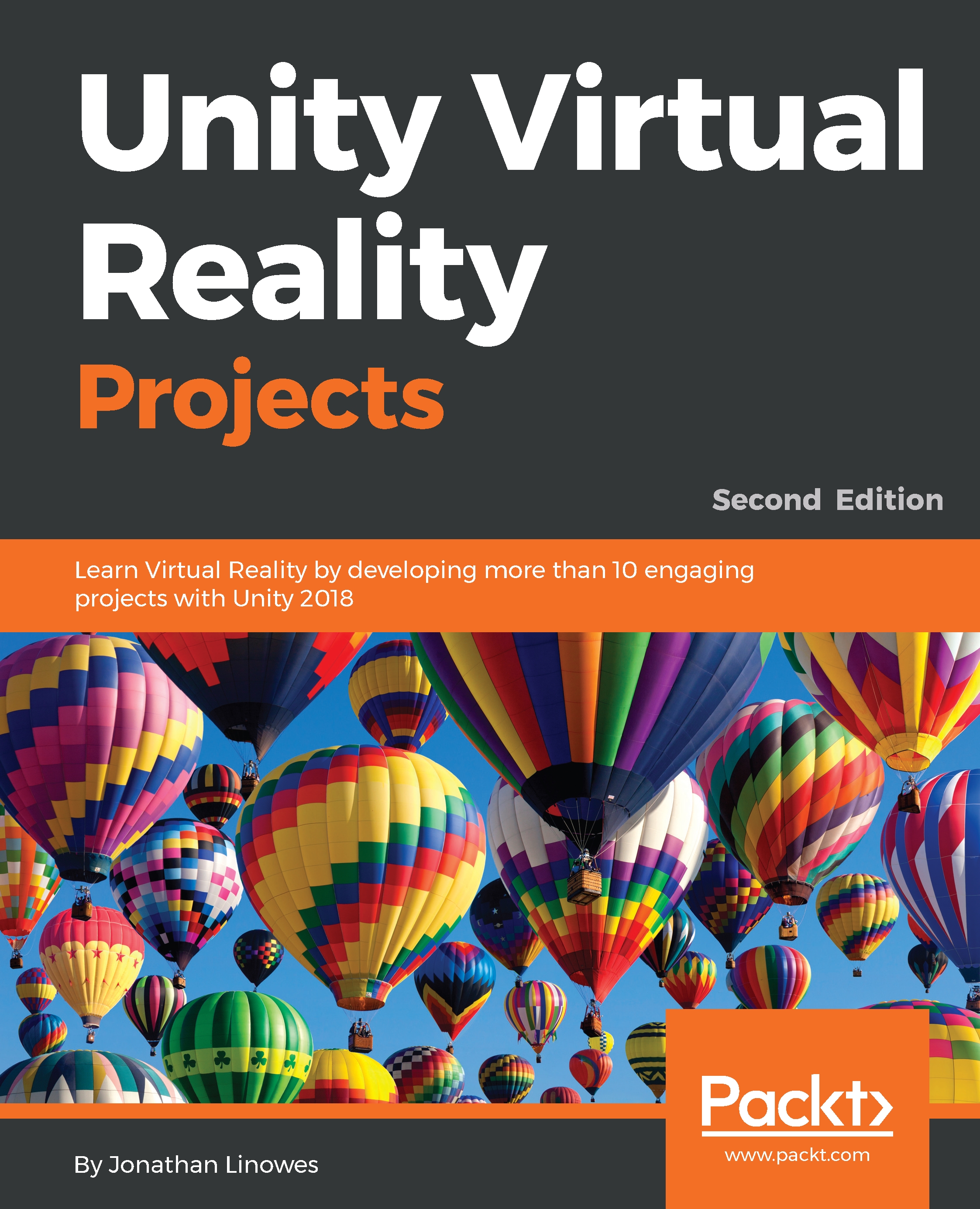In this chapter, we'll dig a bit more into level design, modeling, rendering, teleporting, and animation; implementing an interactive space you can experience in VR. The scene is a photo gallery, where you design a simple floor plan and use a Blender to extrude it vertically into the walls. Use your own photos. You can move around the space via teleport or an animated ride through.
In this chapter, we are going to discuss the following topics:
- Using Blender and Unity to build a simplistic art gallery
- Interacting with objects and metadata
- Data structures, lists, and scriptable objects
- Using teleportation
- Creating an animated walkthrough
Note that the projects in this chapter are separate and not directly required by the other chapters in this book. If you decide to skip any of it or not save your work, that's OK.


